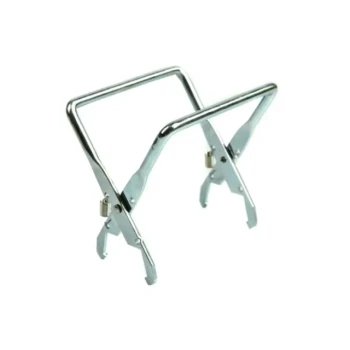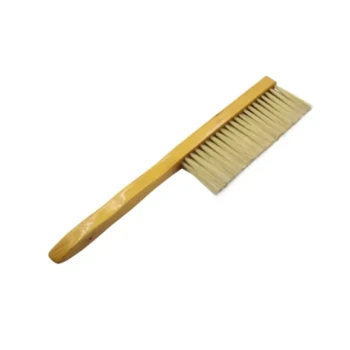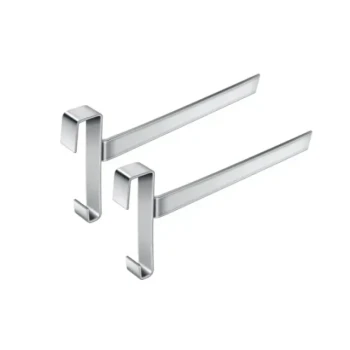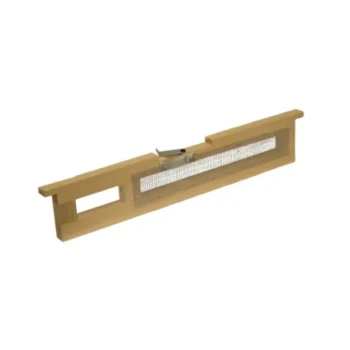When selecting a beekeeping veil, the highest quality options are defined by features that maximize protection, visibility, and comfort. Key elements include a soft but well-structured hat with reinforced brims to keep mesh away from your face, an oversized and breathable mesh screen for full neck protection and clear sight, and elastic shoulder straps to ensure a secure, bee-proof fit.
The best beekeeping veil is more than just a barrier against stings. It is a critical tool that provides a secure, comfortable, and unobstructed view, allowing you to focus entirely on the needs of your hive.
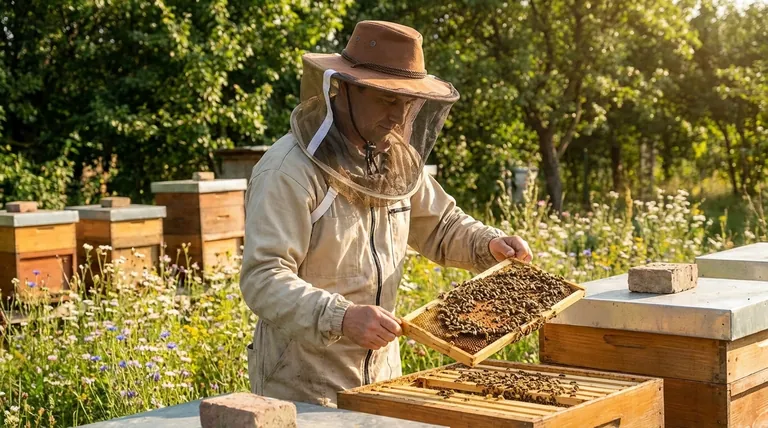
Core Components of a High-Quality Veil
A veil's effectiveness comes down to the synergy between its structure, materials, and how it secures to your body. Each component plays a distinct role in your safety and comfort.
The Brim and Hat Structure
The hat serves as the foundation for the entire veil. A soft, comfortable hat reduces fatigue during long inspections.
Crucially, reinforced top and bottom brims provide rigidity. This structure is non-negotiable, as it holds the mesh screen away from your skin, making it impossible for a bee's stinger to reach your face.
The Mesh: Your Window and Shield
The mesh is your primary interface with the hive. A quality veil uses an oversized mesh screen that extends down to protect your neck and shoulders, common areas for stings when you bend over a hive.
The material must be breathable to allow for adequate airflow and prevent overheating. Most importantly, it must provide excellent visibility; dark-colored mesh is standard as it reduces glare and is easier to see through.
The Securement System
How the veil stays in place is critical. Elastic shoulder straps are a simple but effective feature that keeps the veil from shifting or lifting as you move.
This secure fit closes potential gaps around your neck and shoulders, preventing curious bees from finding a way inside your protective gear.
A Critical Decision: Attached vs. Separated Veils
One of the most important choices you will make is whether to use a veil that is permanently attached to a jacket or one that is a separate piece of equipment.
The Case for Attached Veils
Veils that are integrated into a beekeeping jacket or full suit offer the most secure seal possible. Zippers or other seamless connections eliminate gaps entirely.
This design is highly recommended for beginners, as it removes any guesswork and provides maximum peace of mind.
The Flexibility of Separated Veils
A separated veil, typically a hat-and-veil combination, offers greater modularity. If the mesh gets torn or damaged, you only need to replace the veil itself, not the entire jacket.
This flexibility is often preferred by experienced beekeepers who are confident in their ability to create a secure overlap with their clothing.
Making the Right Choice for Your Needs
Your ideal veil depends on your experience level and priorities. Use these guidelines to make an informed decision.
- If your primary focus is maximum security as a beginner: Choose an attached veil that is fully integrated into a beekeeping jacket for a seamless, worry-free seal.
- If your primary focus is long-term flexibility and cost-effectiveness: Opt for a separated hat and veil, which allows you to replace individual components as they wear out.
- If your primary focus is comfort during long inspections: Prioritize a veil with a rigid, well-structured brim and highly breathable, dark-colored mesh to ensure excellent airflow and visibility.
Ultimately, a quality veil should be so effective and comfortable that you forget you are wearing it, empowering you to work with confidence.
Summary Table:
| Key Feature | Purpose | Benefit |
|---|---|---|
| Reinforced Brim & Hat Structure | Holds mesh away from face | Prevents stings, reduces fatigue |
| Oversized, Breathable Mesh | Provides neck protection and clear visibility | Enhances safety, improves airflow |
| Elastic Shoulder Straps | Ensures a secure, bee-proof fit | Eliminates gaps, prevents shifting |
| Attached vs. Separated Design | Offers security or flexibility | Suits beginners or experienced beekeepers |
Equip your commercial apiary or distribution business with premium beekeeping veils from HONESTBEE. Our wholesale-focused operations ensure you receive durable, safety-tested equipment that enhances beekeeper productivity and comfort. Contact us today to discuss bulk pricing and reliable supply for your beekeeping needs!
Visual Guide
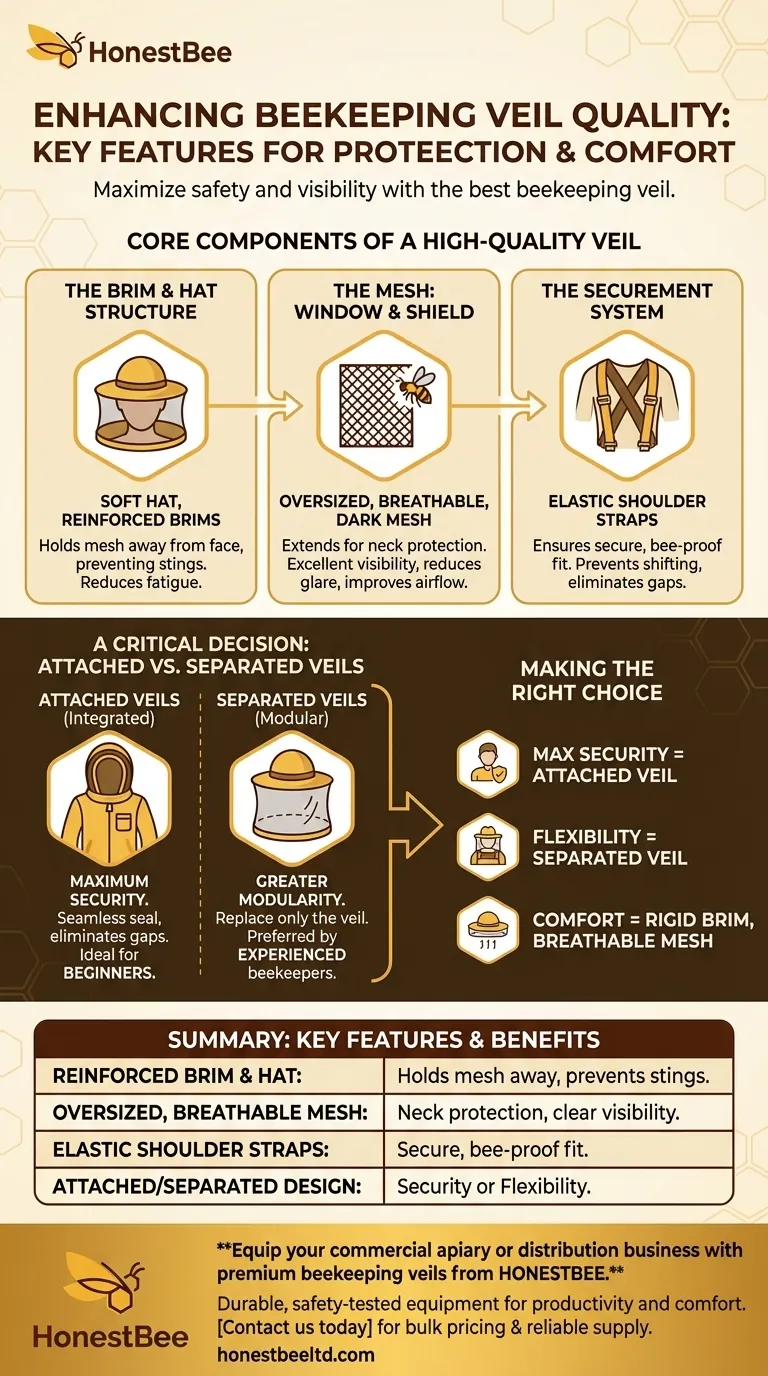
Related Products
- Heavy Duty Cowboy Beekeeper Hat with Visibility Veil Outdoor Professional Beekeeping Protective Gear
- Beekeeper Cowboy Hat and Veil for Beekeeping
- Square Folding Bee Hat Veil with String for Beekeeping
- Professional Beekeeping Suit for Kids and Girls Childrens Bee Keeper Suit
- Durable Galvanized Steel Frame Grip
People Also Ask
- What is the purpose of a hat and veil in beekeeping? Essential Protection for Head & Face
- What are the benefits of the lightweight fabric used in the beekeeping hat veil? Enhanced Visibility & Comfort for Hive Work
- Why are a hat and veil considered the most important parts of beekeeping protective gear? Essential Protection for Your Face and Confidence
- How can beekeeping supplies and accessories enhance the hobby? Essential Tools for Safe & Rewarding Beekeeping
- Why is head protection important for beekeepers? Essential Safety for Confident Hive Management




